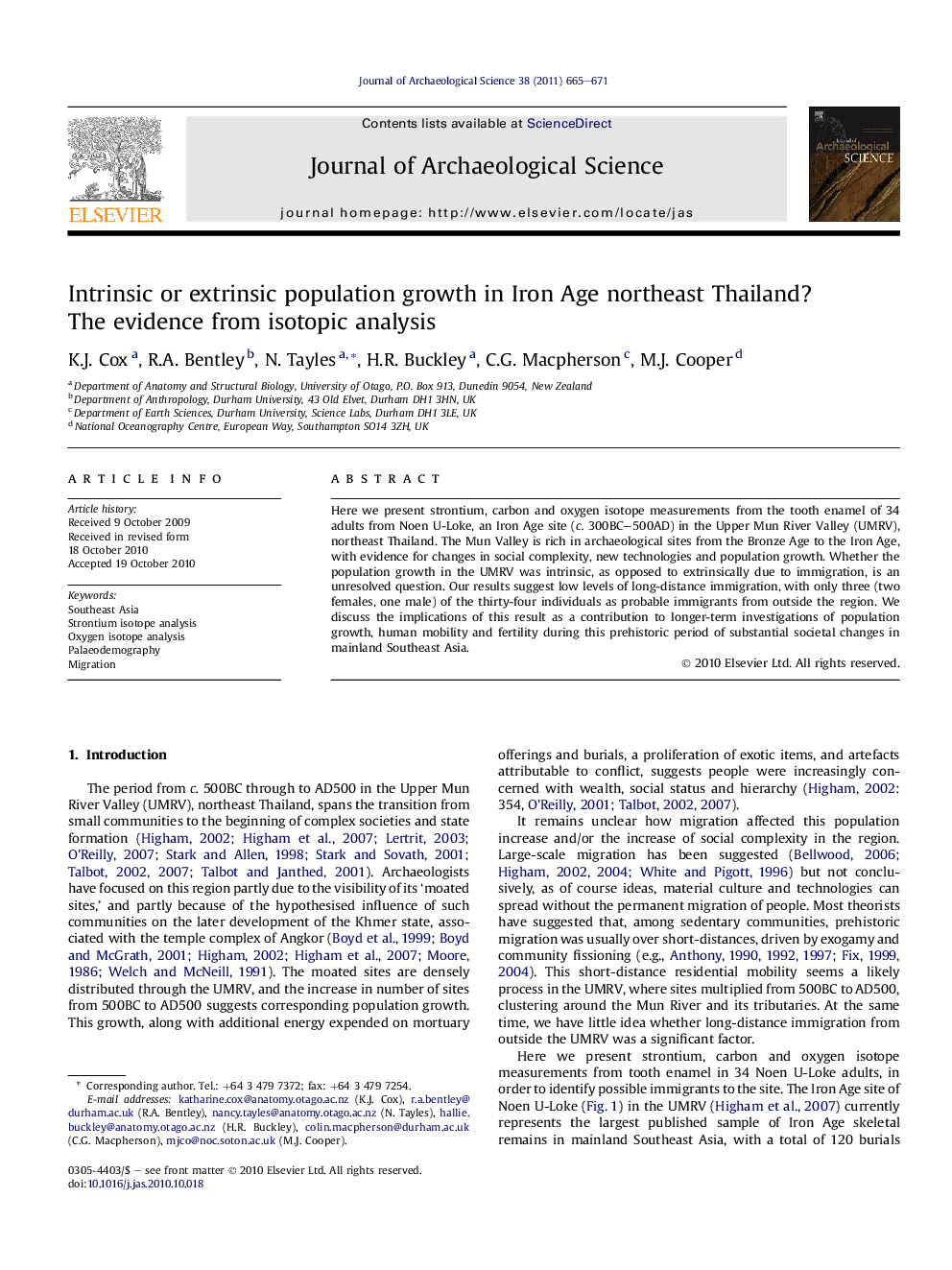| Article ID | Journal | Published Year | Pages | File Type |
|---|---|---|---|---|
| 1036127 | Journal of Archaeological Science | 2011 | 7 Pages |
Here we present strontium, carbon and oxygen isotope measurements from the tooth enamel of 34 adults from Noen U-Loke, an Iron Age site (c. 300BC–500AD) in the Upper Mun River Valley (UMRV), northeast Thailand. The Mun Valley is rich in archaeological sites from the Bronze Age to the Iron Age, with evidence for changes in social complexity, new technologies and population growth. Whether the population growth in the UMRV was intrinsic, as opposed to extrinsically due to immigration, is an unresolved question. Our results suggest low levels of long-distance immigration, with only three (two females, one male) of the thirty-four individuals as probable immigrants from outside the region. We discuss the implications of this result as a contribution to longer-term investigations of population growth, human mobility and fertility during this prehistoric period of substantial societal changes in mainland Southeast Asia.
Research highlights► Isotope measurements from tooth enamel can identify immigrants to prehistoric sites. ► Isotopes from skeletons from Noen U-Loke, northeast Thailand show few immigrants. ► Results suggest late prehistoric population growth was intrinsic.
